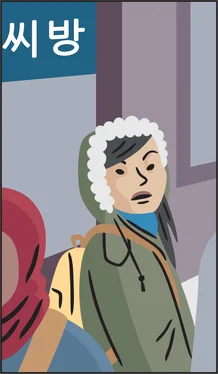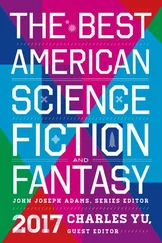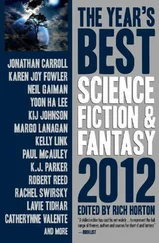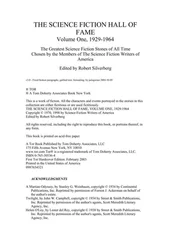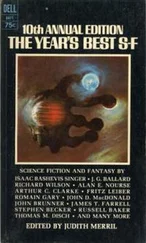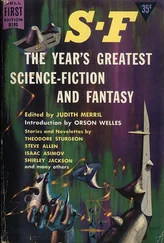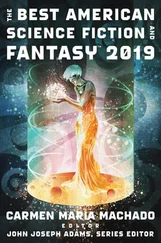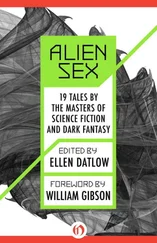“And I’m releasing that Clownfish tape,” I said. “You’re not going to make a penny selling it.”
His stricken look—so much more pained than when he’d watched Mitch die through my eyes—told me I’d struck pay dirt. Filthy, stinking pay dirt.
Well, there would certainly be buzz all right.
“You can’t release it,” he said. “It’s our intellectual property. Ours and Clownfish’s.”
“Is it?” I smiled, though it felt like plastic pinned across my lips. “What a pity it’s already been pirated, then.”
I turned away. It took a lot of will not to slam the door behind me, but it was so much more satisfying to let it drift slowly, aimlessly closed between us.
I glanced back over my shoulder once as I walked away down the hall. Peter was standing there. He’d opened the door and stood framed in the doorway, waiting for me to come back to him, the ridiculous tiara crooked on his head.
Peter waited. And I walked away.
A prolific, award-winning science fiction and fantasy author, Elizabeth Bear won the John W. Campbell Award for Best New Writer in 2005, then went on to win the Locus Award for Best First Novel in 2006 for Hammered. She followed it up with two sequels to form the Jenny Casey trilogy, just one of her many series, including the Eternal Sky trilogy (which Tor.com called “the most significant epic fantasy published in the last decade”), the Jacob’s Ladder trilogy, the New Amsterdam series, the Promethean Age series, and others. Equally recognized for her short work, Bear won a Hugo Award in 2008 for her short story “Tideline” and another for her novelette “Shoggoths in Bloom” in 2009. Bear’s activity in science fiction and fantasy fan communities has garnered her a loyal online following, as well as two Hugo Awards for Best Fancast for SF Squeecast, for which she is a regular contributor (along with fellow author Seanan McGuire).

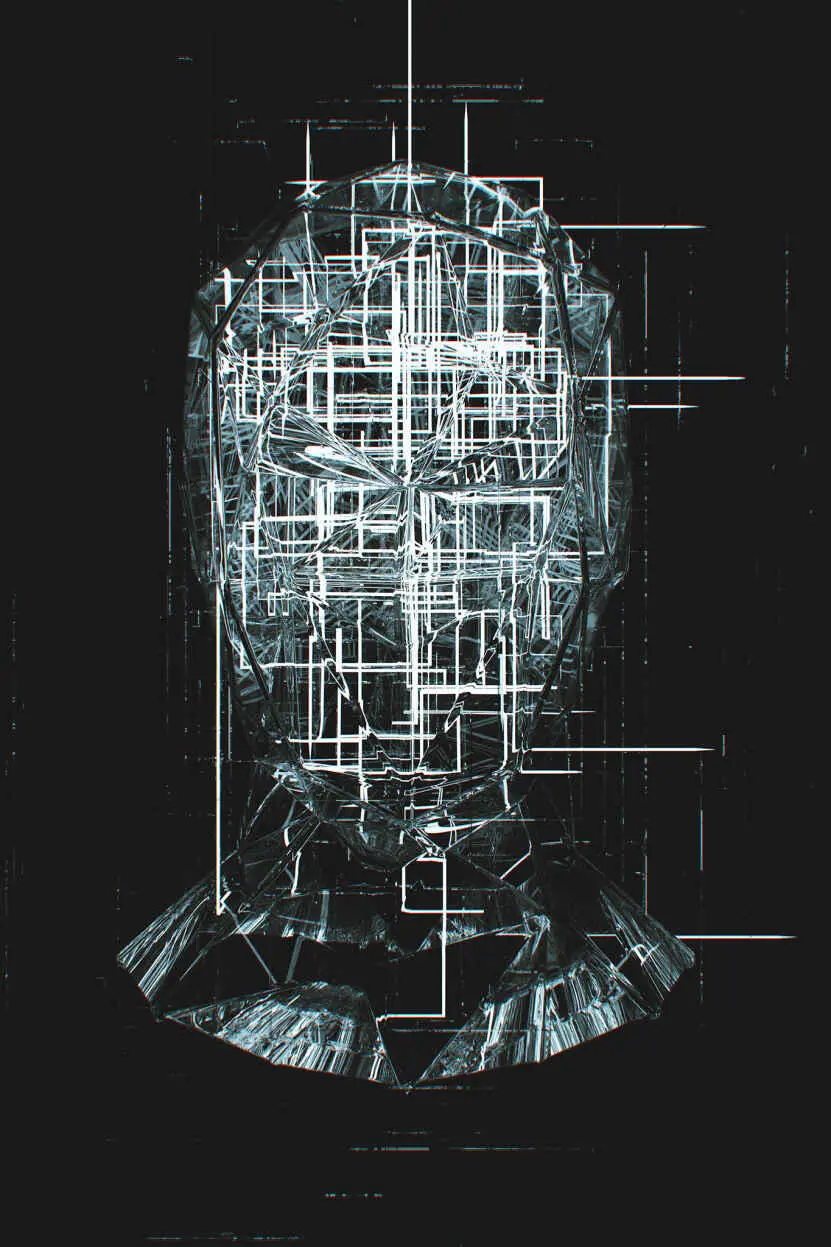
Nancy Kress
Machine Learning
Ethan slipped into the back of the conference room in Building 5 without being noticed. Fifty researchers and administrators, jammed into the room lab-coat-to-suit, all faced the projection stage. Today, of course, it would be set for maximum display. The CEO of the company was here, his six-foot-three frame looming over the crowd. Beside him, invisible to Ethan in the crush, would be tiny Anne Gonzalez, R&D chief. For five years a huge proportion of the Biological Division’s resources—computational, experimental, human—had been directed toward this moment.
Anne’s clear voice said, “Run.”
Some people leaned slightly forward. Some bit their lips or clasped their hands. Jerry Liu rose onto the balls of his feet, like a fighter. They all had so much invested in this: time, money, hope.
The holostage brightened. The incredibly complex, three-dimensional network of structures within a nerve cell sprang into view, along with the even more complicated lines of the signaling network that connected them. Each line of those networks had taken years to identify, validate, understand. Then more time to investigate how any input to one substructure could change the whole. Then the testing of various inputs, each one a molecule aimed at the deadly thing near the center of the cell, the growing mass of Moser’s Syndrome. All this hard work, all the partnering with pharmaceutical companies, in order to arrive at Molecule 654-a, their best chance.
So far, no one had noticed Ethan.
The algorithm for 654-a began to run, and in a moment the interaction combinations produced the output on the right side of the screen. Only two outputs were possible: “continued cell function” or “apoptosis.” The apoptosis symbol glowed. A second later, in a burst of nonrealistic theatrics, the cell drooped and sagged like one of Dalí’s clocks, and the lethal structure at its heart vanished.
Cheering erupted in the room. People hugged each other. A lab tech stood on tiptoe and kissed the surprised CEO. They had done it, identified a possible cure for the disease that attacked the bodies of children, and only children, killing half a billion kids worldwide in the last five years. They had done it with molecular computation, with worldwide partnerships with universities and Big Pharma, and with sheer grit.
Someone to Ethan’s left said, “Oh!” Then someone else noticed him, and someone after that. Ethan’s story was company-wide gossip. The people at the front of the room went on burbling and hugging, but a small pocket of silence grew around him, the embarrassed silence of people caught giggling at a wake. Laura Avery started toward him.
He didn’t want to talk to Laura. He didn’t want to spoil this important celebration. Quickly he moved through the door, down the corridor, into the elevator. Laura, following, called out, “Ethan!” He hit the DOOR CLOSE button before she could reach him.
In the lobby he walked rapidly out the door, heading through the rain toward his own facility. Buildings of brick and glass rose ghostly in the thick mist. MultiFuture Research was a big campus, and he was soaked by the time he reached Building 18. Inside, he nodded at Security and shook himself like a dog. Droplets spun off him. What the hell had he done with his umbrella? He couldn’t remember, but it didn’t matter. The important thing was to get back to his own work.
He didn’t belong at a celebration to defeat Moser’s Syndrome.
Too late, too late. Way too late.

Building 18 was devoted to machine learning. Ethan’s research partner, Jamie Peregoy, stood in their lab, welcoming this afternoon’s test subject, Cassie McAvoy. The little girl came with her mother every Monday, Wednesday, and Friday after school. Ethan took his place at the display console.
That end of the lab was filled with desks, computers, and messy folders full of printouts. The other end held child-sized equipment: a musical keyboard, a video-game console, tables and chairs, blocks, and puzzles. The back wall was painted a supposedly cheerful yellow that Ethan found garish. In the center, like a sentry in no-man’s-land, stood a table with coffee and cookies.
“The problem with machine learning isn’t intelligence,” Jamie always said to visitors. “It’s defining intelligence. Is it intelligence to play superb chess, crunch numbers, create algorithms, carry on a conversation indistinguishable from a human gabfest? No. Turing was wrong. True intelligence requires the ability to learn for oneself, tackling new tasks you haven’t done before, and that requires emotion as well as reasoning. We don’t retain learning unless it’s accompanied by emotion, and we learn best when emotional arousal is high. Can our Maip do that? No, she cannot.”
If visitors tried to inject something here, they were out of luck. Jamie would go into full-lecture mode, discoursing on the role of the hippocampus in memory retention, on how frontal-lobe injuries taught us that too little emotion could impair decision making as deeply as too much emotion, on how arousal levels were a better predictor of learning retention than whether the learning was positive or negative. Once Jamie got going, he was as unstoppable as a star running back, which was what he resembled. Young, brilliant, and charismatic, he practically glittered with energy and enthusiasm. Ethan went through periods where he warmed himself at Jamie’s inner fire, and other periods where he avoided Jamie for days at a time.
Читать дальше
